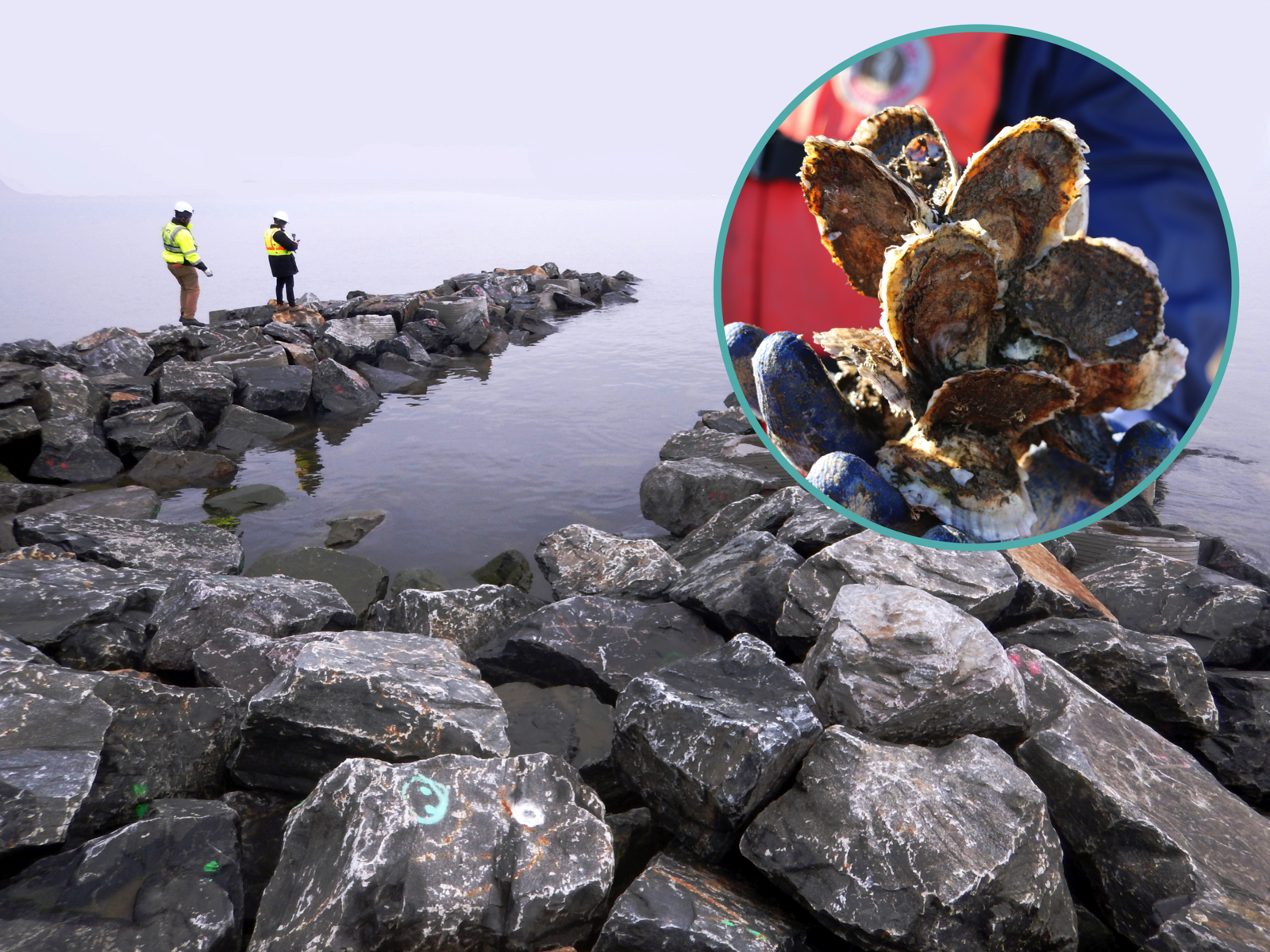Oysters are design collaborators in a visionary green infrastructure project off the shore of Staten Island in New York. SCAPE and founder Kate Orff receive the fifth OBEL AWARD architecture prize for the radical breakwaters design and community and ecosystems-driven approach to adaptation.
–The OBEL AWARD, which honours architectural contributions to people and planet, has chosen the project Living Breakwaters in New York as its fifth winner and the best response to “adaptation”—the OBEL AWARD focus of 2023.
–Living Breakwaters primarily consists of 2,400 linear feet of near-shore breakwaters—structures built of stone and ecologically-enhanced concrete with a variety of features such as “reef ridges” and “reef streets” that will provide diverse habitat space for marine species.
–The green infrastructure project is developed by landscape architecture and urban design studio SCAPE for Rebuild by Design—a design competition led by the U.S. Department of Housing and Urban Development (HUD) after Superstorm Sandy.
Living Breakwaters, the 2023 OBEL AWARD–winning project, is a half-mile linear necklace of near-shore breakwaters along the south shore of Staten Island in New York. A mix of stones and carefully designed ecologically enhanced concrete units are placed strategically to calm the water, reduce erosion, and rebuild onshore beaches, but also to support oysters, fin fish, and other marine species. The oysters will form part of the design of the artificial reef formation. As they reproduce, the breakwaters grow denser and able to provide more protection of the shore.
Beyond the breakwaters, the project has involved nearly a decade of educational and engagement-related programming designed to advance community stewardship, citizen science, and recreation along the water’s edge.
The Living Breakwaters concept was developed by a large, multi-disciplinary team led by SCAPE as part of a winning proposal for Rebuild By Design, the design competition launched by the U.S. Department of Housing and Urban Development (HUD) after Superstorm Sandy.
A visionary green infrastructure project, Living Breakwaters reduces risk, revives ecologies, and connects people to the shoreline. Thus, the project tackles the full task of adaptation according to Chair of the OBEL AWARD jury, Martha Schwartz:
“Breakwaters is an ancient idea for how to protect shorelines—and the people who live close to them—by building underwater seawalls to defend a harbor or a beach from the force of waves. Kate has designed an extraordinary, modern-day interpretation, the Living Breakwaters, which will not only protect humans and revitalize the coastline of New York City, but also restore lost marine biodiversity. This is a visionary project that tackles the full task of adaptation, and which has the capacity to inspire and to positively impact vulnerable shorelines worldwide.”
On receiving the prize, Kate Orff, landscape architect and Founding Principal of SCAPE, says: “Winning an architecture prize is really important for a project like this which involved so many different people working together with a shared purpose. It is a true encouragement for community members, elected officials, landscape architects, ecologists and engineers, to come together and develop coastal adaptation projects wherever they are. It’s also an acknowledgement of the importance of thinking about design at a holistic, planetary scale. Our protective natural systems are in various stages of decline globally, and in order to repair them, we have to think and design systemically to tie the pieces back together. And that is an incredibly bold, creative act. Hopefully, this award can emphasize this point : that nature is a matter of design now and that we have to work fast and work together.”
About the OBEL AWARD
The OBEL AWARD is an international prize for architectural achievement presented annually by the Henrik Frode Obel Foundation, founded by Henrik Frode Obel (1942-2014).
The aim of the award is to honour recent and outstanding architectural contributions to human development all over the world—architectural contributions considered broadly as any contribution that helps change our physical, designed environment for the common good. The award is given to works or projects from the past five years, and the winner receives EUR 100,000 and a trophy created by a leading artist.
Each year, the OBEL AWARD jury establishes a particular focus for the prize for the year, always keeping in mind the constant overall goals of the award. In 2023, the focus is: adaptation.
2023 Award ceremony
The award ceremony will take place at the Sydney Opera House on 21 October 2023. The winner will receive a prize sum of EUR 100,000 and a unique work of art by artist Tomás Saraceno as a trophy.
Sydney Opera House is built upon Tubowgule, Gadigal country, so the Henrik F. Obel Foundation would like to acknowledge the Gadigal, the Traditional Custodians of this land, and pay our respects to its Elders, past and present.
Henrik F. Obel was a great admirer of Jørn Utzon and saw how architecture, and in particular Utzon’s work, can act as a lingua franca—a common language for people to connect across barriers, be it generational, ethnic, political, gender, social, cultural, language or other obstacles to inter-human relations.
More info here.



